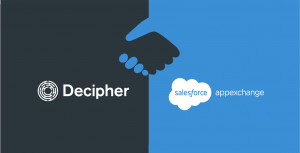With the recent bank closings (such as Silicon Valley Bank) and tightening lending as a consequence, some banks might be offloading business loans that no longer fit their criteria.
When banks start tightening lending, not only do they offload business loans that no longer fit their criteria but they may also be open to participations. Factoring as well as Asset-Based-Lenders can step in and participate on a piece of the deal. At the same time, higher Factoring and ABL fees resulting from increased interest rates can be another advantage of capturing small business loans banks can no longer hold on their books. This creates an opportunity of increased business for Factoring and ABL, and with such demand, lenders should leverage the right technology to:
- Collaborate seamlessly with bank referral partners
- Provide a secure and convenient portal for businesses to apply for funding
- Automate approval and onboarding of customers
Collaborate Seamlessly with Bank Referral Partners
Loan origination involves the complete process of capturing a loan and approving a certain amount of funds on the basis of the client’s requirements and eligibility. At the point of capturing all of the information needed for a funding request, lenders need a way to communicate with their referral partners. A key part of a loan origination system should allow bank contacts, brokers, partners, and other referral sources to be able to collaborate together on a funding request. Referral partners should be able to submit information directly into a loan origination system, upload relevant documentation and collaborate with lenders for a seamless experience so together they can quickly approve and onboard customers.
During the loan origination process, the borrower applies for funding and the lender processes the application through different stages. While elaborating on the loan origination system, we can consider the seven most important steps including: pre-qualification criteria, loan application, application processing, underwriting process, credit decision, closing the loan, and finally funding the loan.
It is a time-consuming process with the potential risk of human error. An automated loan origination software system applies technology, reduces errors, and speeds up the process. It simplifies the lives of lenders and streamlines the entire process from the point of origination through to close. Using a smart and secure loan origination system software, will improve the efficiency and accuracy of your lending business. You will notice an improved workflow with faster originations with fewer errors and less risk.
Provide a Secure and Convenient Portal for Businesses to Apply for Funding
Ideally, you’ll want a white-label highly configurable digital application portal capable of handling multiple types of financial products. It must be accessible to prospects from all devices with a user-friendly interface. Before adopting software, view a demo on your desktop, tablet and smartphone. The commercial loan origination software should have no compatibility issues regarding file uploading. The option of multiple file upload for different applicants must be available in an organized manner. The format of files received is important. The system should allow upload of many kinds of files and use technology to read the information.
You’ll also want the ability for the borrower to connect their bank account at the point of application or later in the process once they are approved. The loan origination solution must be powerful enough to connect directly to banking institutions. Bank data connection is a crucial step for making better credit decisions and for client monitoring. Connecting with the borrower’s bank account is key to streamline loan origination and reduce chances of fraud.
Another major feature to look at in a loan origination platform for making a better decision is accounting extraction. Connecting directly to a borrower’s accounting system for read-only data extraction can simplify the process, reduce friction, and enable better credit decisions. Your LOS software should be smart enough to track all the missing information automatically and should incorporate a checklist for meeting the criteria of loan eligibility or funding criteria. The loan is processed only when the applicant fulfills required criteria and certain terms and conditions. A digital checklist detects if anything is missing and clearly shows it on the checklist. This tracking system helps in reducing manual review headaches and going back and forth with the prospect on missing information.
Automate Approval and Onboarding of Customers
During the loan origination process, underwriting is the crucial part. Underwriting is a process to figure out the creditworthiness of a borrower according to the requirements on their application. This is among the most time consuming processes and may take days in order to protect the interest of both parties. Performing the underwriting process manually consumes a lot of time and involves the risk of human error. This is the reason why commercial lenders use automated underwriting systems.
A loan underwriting software system is beneficial for both parties. In the shortest possible time, smart underwriting systems can assist underwriters and streamline many steps in the process. All the repetitive tasks are accomplished without requiring huge efforts that reduce the time of processing. A software smartly handles all the documents and helps the underwriter review the information quickly.
Lenders also need a 360 view of their client and the entire process for loan origination. The software should illustrate data without bias. If any term and condition is incomplete or missed unintentionally, the software should detect what is missing to assist credit officers.
Accuracy in decision making is a big concern for all lenders. Evaluation of applications manually can result in slow decisions and mistakes. When the same process is enhanced by a software system, it helps underwriters make better credit decisions. A set of lender rules and their risk criteria is customized in the software system to assist the underwriting team. Applicants must meet the qualification standards in order to be approved. On the basis of a prospect’s attributes, software helps score the client and indicate red flags that might be an issue and help the underwriter determine the best type of financing they may qualify for.
Creation of manual reports is a big headache for lenders. If you are using an automated underwriting software, manual work is eliminated and documents can be generated automatically as well as data bureau and credit reports can be ordered as soon as an application is received or based on specific criteria. Moreover, repetitive information is also automatically updated to cut down on the time it takes to analyze a request for funding.
When assessing a commercial loan underwriting system, check the features carefully. It should be capable of a high degree of customization, creating reports, financial spreading, tax monitoring and flagging suspicious individuals or fictitious companies.
In today’s competitive landscape, the right technology can add speed, efficiency, and profitability to the entire lending process, enabling traditional lenders to compete better and to meet the changing needs of customers and team members. Decipher streamlines all steps in the loan origination, underwriting, monitoring, and closing process so your team can focus on cultivating relationships with customers and on growing your portfolio. Schedule a Demo today!




